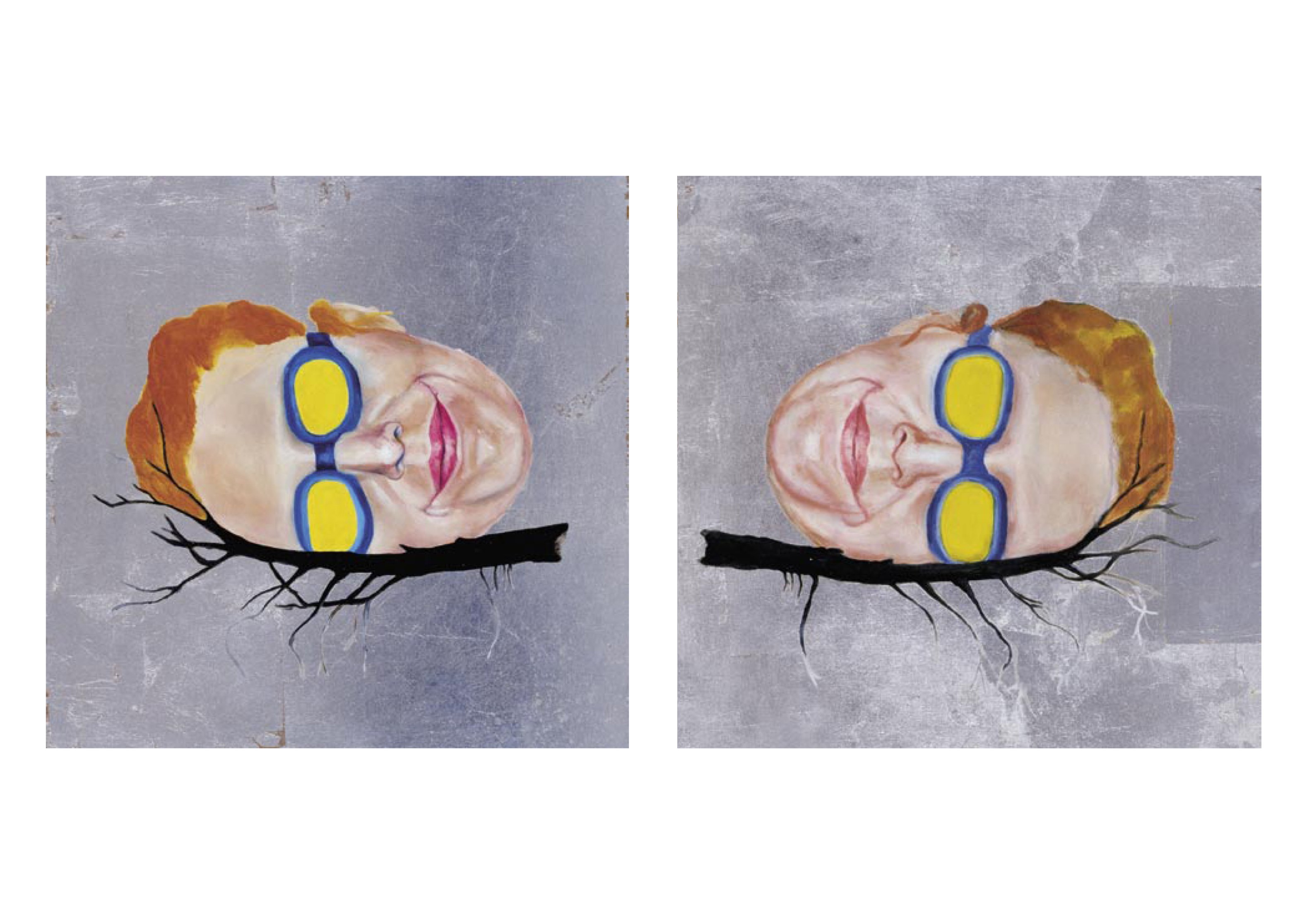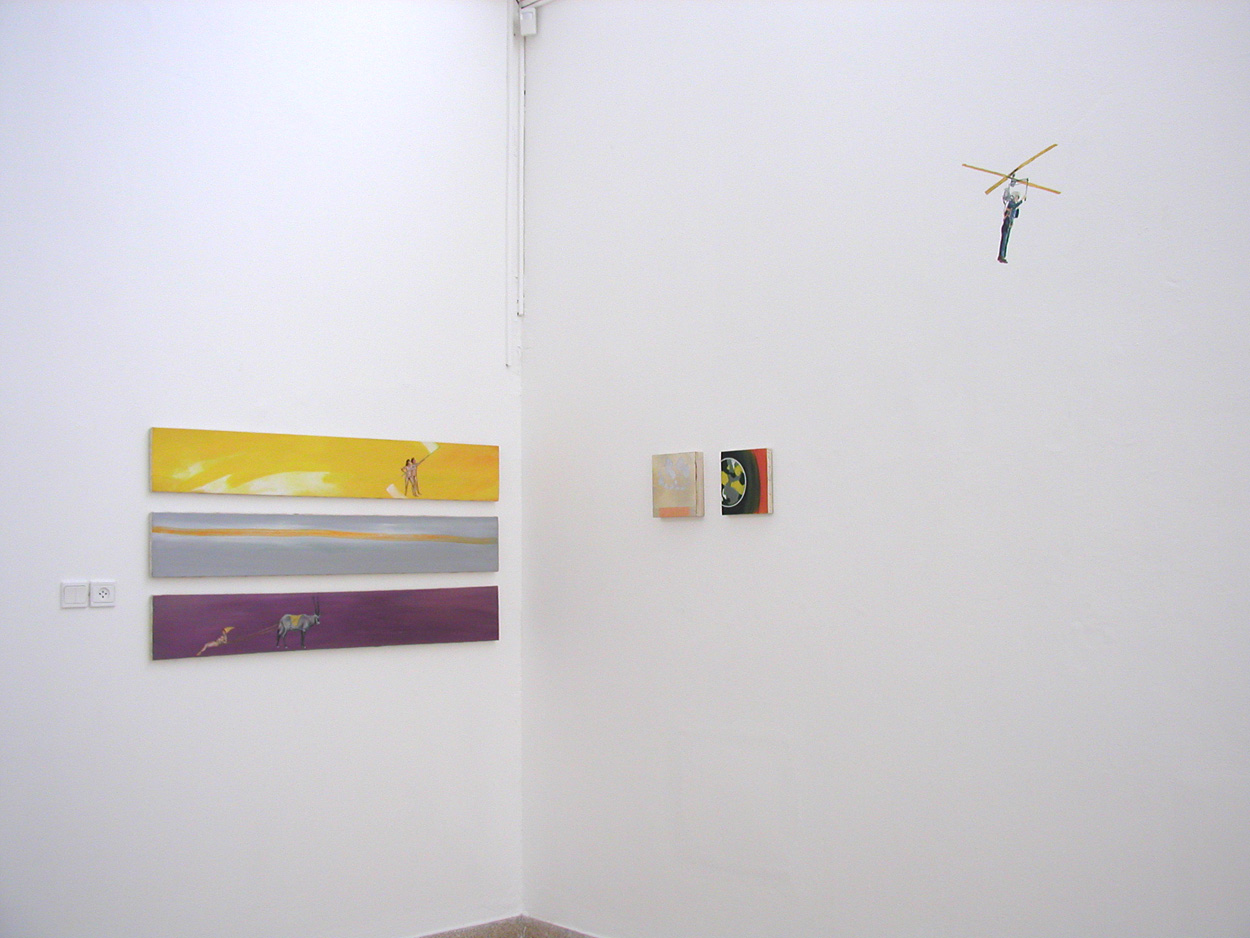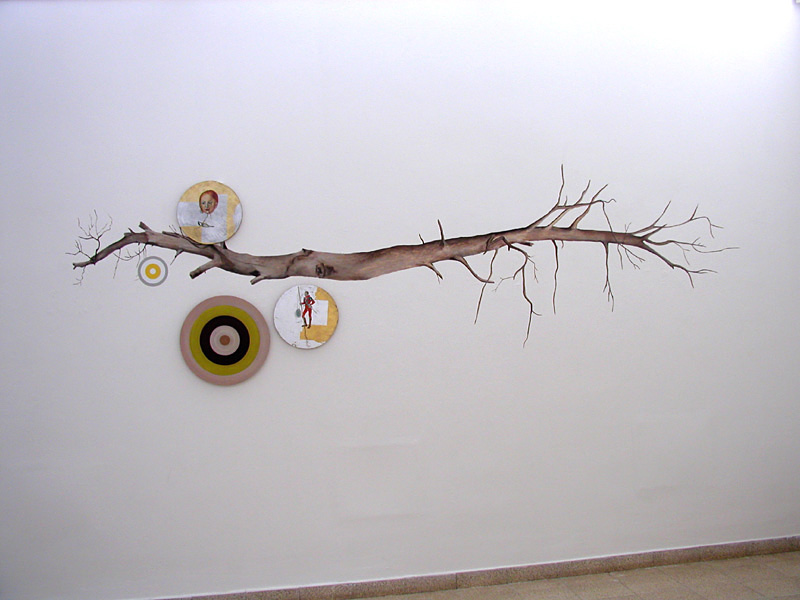











Siamese Twins
Written by Galia Bar Or
A naked miniature woman stars in Ayelet Carmi’s cabinet of the world,
among floating representations of natural and man-made products,
strange plants, scientific fantasies and derivatives of art from distant
times and places. A daring act for one woman, alone, with such liberty of
natural, uninhibited nakedness, and without any pretensions – to represent a model of the universe or to project subtle affinities between a marvelous macrocosm and a microcosm crammed with signs. A naked woman, not a representation of the seasons, nor a woman’s body embodying the cyclicality of nature.
Other representations of nature appear on the white museum wall,
painted in tempera, and interweaving a variety of art languages: huge
branches of a pair of uprooted trees in the style of high painting, bare of
leaves, looking as though they have lost their gravitational force and have
been grafted into one another like Siamese twins, troubling the mind like
the two-headed calf on display at the Beit Sturman Museum nearby. The
“strangenesses” of nature have a double role in Ayelet Carmi’s cabinet of
the world. As a representative model and as an eccentric phenomenon,
they embody, on the face of it, the entire range of the universe’s
possibilities. Opposite them, thin branches and leaves are interlaced, like shadows or phantoms of branches that have been fixated in gold and
silver leaves, which bring to mind decorative painting in the style of Art
Nouveau.
The fine, fragile branches wind behind a tiny naked woman with
red hair, who pulls them behind her to cover the walls of the gallery,
like the spectacular tail of a peacock, crammed with painted medallions,
“eyes” of an entire world, a universe abounding in natural and artificial
representations that have turned into an eternity. In the medallions there
appears a mythological figure that embodies the ultimate ideal man, the
knight or the splendidly garbed piper, standing on one leg in a classical pose designating the flexibility of a man’s body that has frozen as an artifact in the timelessness of culture. There are medallions that are signs, “targets” made of colored wallpaper, and there are medallions that are a gesture of painting in the style of Gabriel Klasmer or Moshe Kupferman, a miniaturized model of a school of painting, or, alternatively – an interpretation of the space of abstract painting in works by Israeli artists. In the corners of the gallery we find the “paintings of stripes”, which hang on top of one another, and here the space of abstract painting appears once more, but this time a tiny feminine figure dances in it, with her body and her hands – an action that retroactively activates a gesture of painting, a “masculine” dynamism of movement – a single, knowing and resolute, painterly stroke.
The liberty of the tiny, naked woman is the liberty of someone who
no longer feels naked, alone and abandoned within the widest circle.
Her rights are not anchored in a narrow circle of a fixed context that is
perceived as a given. She acts without any inhibitions at the constitutive
intersections of culture, and activates these with a new and dynamic
interpretation, reshaping past traditions and responding to challenges
posed by the present. She composes, grafts and imprints her body and
her spirit, with a smiling ease, into near and distant derivatives of human
achievements. And she even builds a cabinet of her own, a spatial world
picture of representations of culture and nature, a cabinet abounding in
humor and fantasy that is not subject to a linear “objective” authority, as is
evinced by the name the artist has given it – “Siamese Twins”.

